This article needs additional citations for verification .(May 2020) |
![Francisco Jover y Casanova, from La Ilustracion Artistica [es]; after a painting by Joaquin Sorolla 1890-07-07, La Ilustracion Artistica, Francisco Jover y Casanovas.jpg](http://upload.wikimedia.org/wikipedia/commons/thumb/6/6f/1890-07-07%2C_La_Ilustraci%C3%B3n_Art%C3%ADstica%2C_Francisco_Jover_y_Casanovas.jpg/220px-1890-07-07%2C_La_Ilustraci%C3%B3n_Art%C3%ADstica%2C_Francisco_Jover_y_Casanovas.jpg)
Francisco Jover y Casanova (1836, Muro de Alcoy - 19 February 1890, Madrid) was a Spanish painter of historical scenes and portraits.
This article needs additional citations for verification .(May 2020) |
![Francisco Jover y Casanova, from La Ilustracion Artistica [es]; after a painting by Joaquin Sorolla 1890-07-07, La Ilustracion Artistica, Francisco Jover y Casanovas.jpg](http://upload.wikimedia.org/wikipedia/commons/thumb/6/6f/1890-07-07%2C_La_Ilustraci%C3%B3n_Art%C3%ADstica%2C_Francisco_Jover_y_Casanovas.jpg/220px-1890-07-07%2C_La_Ilustraci%C3%B3n_Art%C3%ADstica%2C_Francisco_Jover_y_Casanovas.jpg)
Francisco Jover y Casanova (1836, Muro de Alcoy - 19 February 1890, Madrid) was a Spanish painter of historical scenes and portraits.
After beginning his artistic studies in his hometown, he attended the Real Academia de Bellas Artes de San Fernando in Madrid, where he studied with Federico de Madrazo. After winning a third-class medal at the National Exhibition of Fine Arts in 1864, he received a government stipend to study in Rome at the Accademia Chigi. He also was a frequent visitor to the studios of Mariano Fortuny, who had a great influence on his style.
His painting of the Pontifical Court was awarded a gold medal. [1] Many of the works he created there were sent home for exhibitions and received awards. His portrayal of the "Conquest of Oran" was purchased by the government and displayed in the Senate conference room. [1]
Upon returning to Spain, he settled permanently in Madrid and became in involved in teaching, as well as painting. He also participated in a major project at the Basilica of San Francisco el Grande, together with Casto Plasencia, Salvador Martínez Cubells and Manuel Domínguez Sánchez, among others.
He also created the frescoes in the expiatory chapel at the church of San Antonio de Padua, Aranjuez, and bought the ruins of the Real monasterio de Nuestra Señora de Fresdelval , with the intent of promoting and paying for their restoration. [1] A monumental canvas, named "Represalias" (Retaliation), and some smaller works, remained unfinished at the time of his death. A few were completed by Joaquín Sorolla, per his wishes.
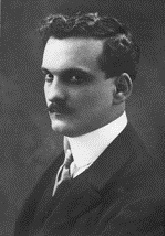
Julio Romero de Torres was a Spanish painter. His brothers, Rafael and Enrique, also became painters.
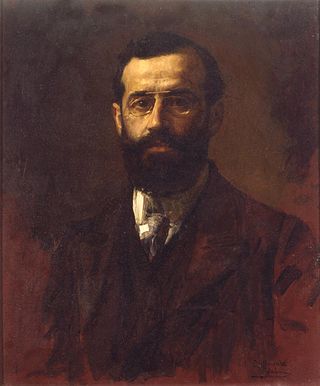
Luis Menéndez Pidal was a Spanish painter; primarily of genre scenes.

Domingo Valdivieso y Henarejos was a Spanish painter and engraver in the Academic style.

Cecilio Plá y Gallardo was a Spanish painter and illustrator.

Salvador Martínez Cubells was a Spanish painter and art restorer, who specialized in history painting and Costumbrismo.

Luis Álvarez Catalá was a Spanish painter of historical scenes and Director of the Museo del Prado from 1898 to 1901.
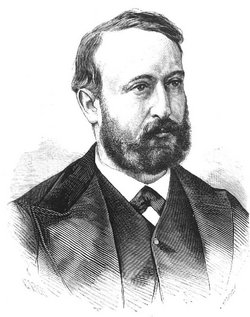
Francisco Sans Cabot, in Catalan: Francesc Sans i Cabot was a Catalan painter who served as Director of the Museo del Prado from 1873 to 1881.
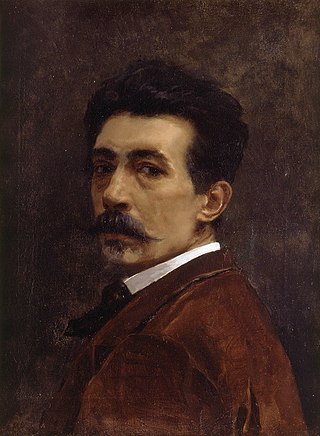
Joaquín Agrasot y Juan was a Spanish painter of the Realistic style who produced many works in the Costumbrismo genre.
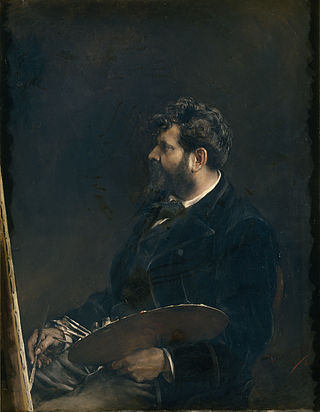
Francisco José Domingo y Marqués was a Spanish painter in the Eclectic style.

José Santiago Garnelo y Alda was a Spanish painter in the Naturalist style. He mostly did genre scenes, portraits and scenes from Classical history.

Eugenio Oliva y Rodrigo was a Spanish painter, primarily known for his murals.
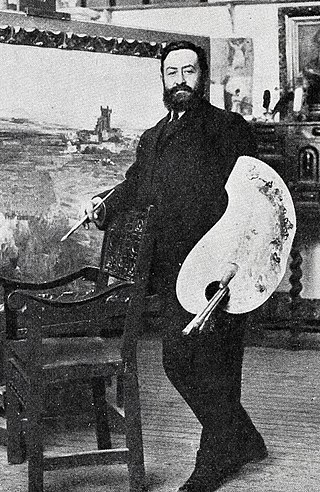
Marceliano Santa María was a Spanish painter, noted for his Castilian landscapes, historical art, and portraits.

Manuel Domínguez Sánchez was a Spanish painter and illustrator in the Academic style. His early work shows some influence from the Nazarenes. Later, his style came to resemble that of Eduardo Rosales.

Francisco Javier Amérigo y Aparici was a Spanish painter who specialized in historical scenes.
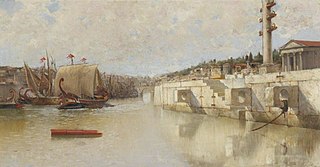
Justo Ruiz Luna was a Spanish painter, watercolorist and pastellist; best known for his maritime scenes.

Fernando Cabrera Cantó (1866–1937) was a Spanish painter and sculptor; whose themes ranged from the cheerful and satiric to the darkly morbid. He also did landscapes.
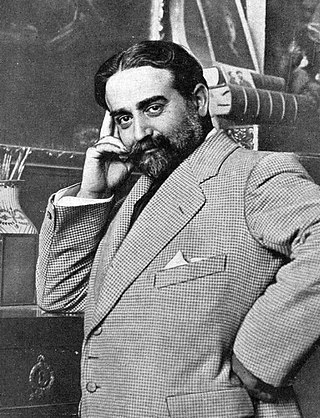
Carlos Vázquez Úbeda was a Spanish painter, illustrator and poster artist.

Manuel Ramírez Ibáñez was a Spanish painter; primarily known for historical and genre scenes.

José Ramón Zaragoza Fernández was a Spanish painter, primarily known for genre scenes and female portraits.

Antonio Ortiz Echagüe was a Spanish costumbrista painter, who spent much of his career in other countries. Alongside Ignacio Zuloaga and Joaquin Sorolla, he forms part of the trio of aces of Spanish costumbrist painting at the turn of the twentieth century. The recognition and international awards which he won, as well as the presence of his paintings in first-rate museums in Europe, the United States and South America, give witness to the extraordinary relevance of this painter, who knew how to blend tradition with modernity. He was the older brother of the photographer, engineer and entrepreneur José Ortiz Echagüe.
![]() Media related to Francisco Jover y Casanova at Wikimedia Commons
Media related to Francisco Jover y Casanova at Wikimedia Commons